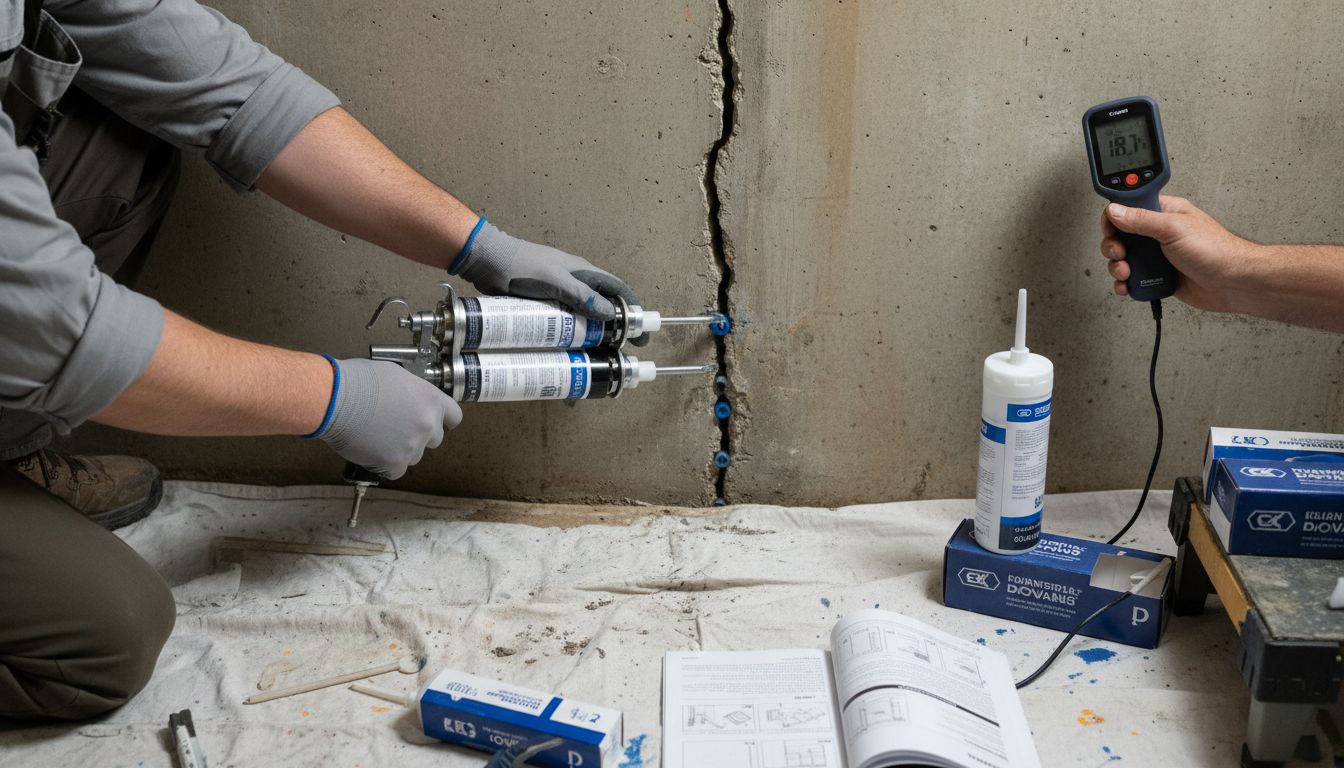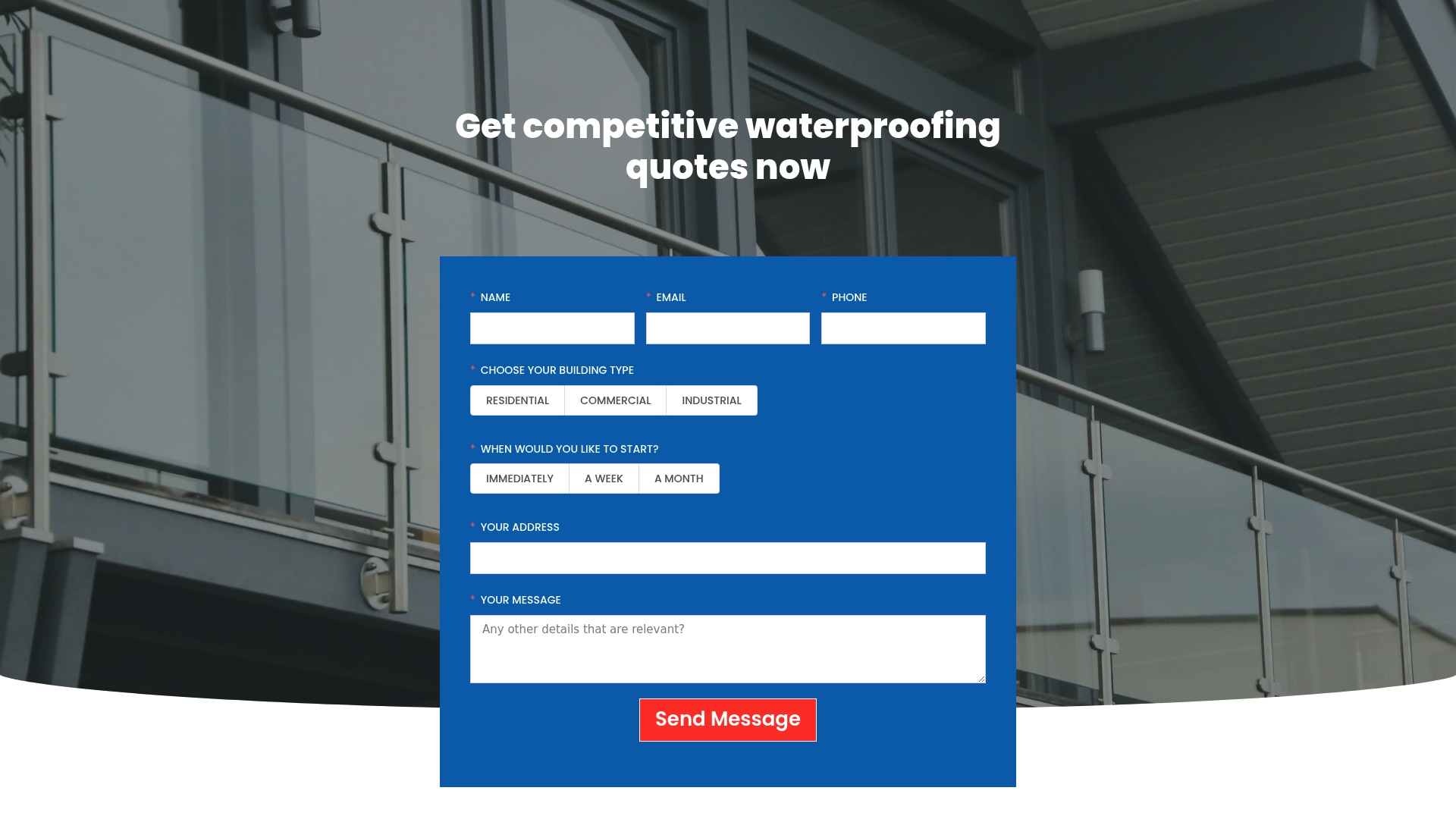Water damage is the hidden threat that affects nearly one in four basements each year. Ignoring this risk can cost homeowners much more than simple repairs. Effective basement waterproofing helps prevent structural problems, unhealthy mould growth, and costly long-term damage before they start. This guide clears up the confusion, highlighting proven solutions that shield your home from moisture while helping you choose the safest, most cost-effective protection.
Table of Contents
- Understanding Basement Waterproofing Solutions
- Common Causes Of Basement Water Problems
- Types Of Basement Waterproofing Methods
- Key Steps In The Waterproofing Process
- Selecting Qualified Waterproofing Contractors
- Costs, Risks, And What To Avoid
Key Takeaways
| Point | Details |
|---|---|
| Comprehensive Waterproofing Approach | Effective basement waterproofing integrates material science, strategic methods, and ongoing maintenance to ensure long-term protection against moisture. |
| Critical Assessment of Risks | Identifying potential water entry points and environmental factors is essential to mitigate risks of structural damage and health hazards. |
| Choosing the Right Contractor | Selecting a qualified waterproofing contractor involves evaluating their experience, certifications, and adherence to industry standards for optimal results. |
| Long-term Investment | Proactive waterproofing prevents costly repairs and health risks, emphasizing the importance of treating it as a crucial investment in property protection. |
Understanding Basement Waterproofing Solutions
Basement waterproofing represents a critical defence mechanism against moisture intrusion, structural damage, and potential health hazards in underground spaces. As the sasas notes, effective waterproofing is not merely about preventing water seepage but creating comprehensive protection for subterranean structures.
At its core, basement waterproofing involves multiple strategic approaches designed to prevent moisture penetration and manage potential water infiltration. According to id, two primary techniques dominate the landscape: bituminous waterproofing and cementitious waterproofing. These methods offer distinct advantages in controlling moisture migration through basement walls and foundations.
Key considerations for successful basement waterproofing include:
- Comprehensive site assessment
- Identifying potential water entry points
- Selecting appropriate waterproofing materials
- Understanding local soil and groundwater conditions
- Implementing drainage solutions
- Regular maintenance and inspection
Successful waterproofing requires a holistic approach that combines material science, architectural understanding, and precise application techniques. Understanding the Benefits of Basement Waterproofing provides deeper insights into why proactive moisture management is essential for protecting your property’s structural integrity and inhabitants’ health.
Common Causes Of Basement Water Problems
Basement water problems are complex issues that stem from multiple environmental and structural factors. As highlighted by resource, these challenges can originate from high groundwater levels, sub-surface seawater intrusion, or unexpected natural spring locations beneath your property.
The primary root causes of basement water problems typically fall into several critical categories. Hydrostatic pressure represents one of the most significant threats, where underground water accumulates and creates intense force against basement walls.

Key causes of basement water problems include:
- Poor external drainage systems
- Improperly sealed foundation walls
- Cracks in basement concrete
- Inadequate slope around building perimeter
- Malfunctioning or blocked drainage pipes
- High water table in local geography
Preventing these issues requires proactive maintenance and strategic interventions. 4 Home Maintenance Tips to Help Prevent Basement Seepage provides comprehensive guidance on identifying and mitigating potential water infiltration risks before they escalate into significant structural challenges.
Types Of Basement Waterproofing Methods
Basement waterproofing encompasses a diverse range of techniques designed to protect underground spaces from moisture intrusion. As documented by sasas, these methods include liquid membranes, sheet membranes, and cementitious coatings, each offering unique advantages in moisture prevention and structural protection.
According to id, two primary waterproofing approaches dominate the landscape: bituminous and cementitious techniques. Bituminous methods involve applying a tar-like substance that creates a robust water-resistant barrier, while cementitious approaches use specialized cement-based compounds to seal potential moisture entry points and reinforce structural integrity.
Key basement waterproofing methods include:
- Interior water drainage systems
- Exterior waterproofing membranes
- Crack injection techniques
- French drain installations
- Sump pump implementations
- Crystalline waterproofing treatments
Understanding the nuanced differences between these methods is crucial for effective moisture management.
5 Common Exterior Basement Waterproofing Techniques offers a comprehensive exploration of external waterproofing strategies that can help property owners make informed decisions about protecting their underground spaces.
Here’s a summary of the main basement waterproofing methods and their key benefits:
| Method | Description | Key Benefits |
|---|---|---|
| Bituminous Waterproofing | Tar-like substance forms water barrier | Durable Long-lasting |
| Cementitious Waterproofing | Special cement-based compounds seal entry | Easy application Cost-effective |
| Liquid Membrane | Liquid coating applied to surfaces | Flexible Seamless protection |
| Sheet Membrane | Pre-formed sheets bonded to walls/floor | Uniform thickness Robust |
| Interior Water Drainage Systems | Channels direct water away inside basement | Controls internal leaks |
| French Drain | Gravel-filled trench for groundwater management | Prevents external seepage |
| Sump Pump | Removes collected water through pumping | Effective during heavy rainfall |
Key Steps In The Waterproofing Process
The waterproofing process is a meticulous procedure that requires careful planning and execution. As sasas emphasizes, surface preparation forms the critical foundation of successful waterproofing, ensuring that subsequent treatments can effectively protect against moisture intrusion.
According to id, the waterproofing journey begins with a comprehensive moisture source identification. This crucial initial step involves thoroughly examining the basement’s current conditions, detecting potential water entry points, and understanding the specific challenges presented by the structure’s unique environment.
Key steps in the waterproofing process include:
- Comprehensive site and moisture assessment
- Thorough surface cleaning and preparation
- Repairing existing cracks and structural vulnerabilities
- Selecting appropriate waterproofing materials
- Precise application of waterproofing treatments
- Installing drainage systems
- Conducting final inspection and quality checks
- Establishing ongoing maintenance protocols
Implementing these steps requires professional expertise and systematic approach. Understanding the Waterproofing Application Process provides additional insights into the nuanced techniques that ensure long-lasting moisture protection for your basement.
Selecting Qualified Waterproofing Contractors
Choosing the right waterproofing contractor is a critical decision that can significantly impact your property’s long-term moisture protection. As sasas advises, evaluating contractors requires a comprehensive assessment of their professional experience, industry certifications, and adherence to established standards.
According to id, the contractor selection process demands thorough due diligence. Property owners should meticulously verify credentials, carefully review past project portfolios, and ensure the contractor utilises high-quality materials that guarantee effective waterproofing solutions.
Key criteria for selecting a qualified waterproofing contractor include:
- Proven track record in basement waterproofing
- Valid professional licensing and certifications
- Comprehensive insurance coverage
- Positive customer testimonials and references
- Transparent pricing and detailed project proposals
- Advanced technical knowledge and expertise
- Use of modern waterproofing technologies
- Commitment to industry best practices
- Warranty offerings on workmanship
Navigating the complex landscape of contractor selection requires careful consideration and strategic evaluation. How to Choose Waterproofing Contractor for Your Property provides additional guidance to help property owners make informed decisions about protecting their valuable investments.
Costs, Risks, And What To Avoid
id highlights that waterproofing costs can vary significantly, with foundation waterproofing in Gauteng presenting complex pricing structures influenced by multiple critical factors. Understanding these cost dynamics is crucial for property owners seeking comprehensive moisture protection without unexpected financial surprises.
According to sasas, neglecting proper waterproofing can lead to catastrophic structural risks, including persistent moisture damage, mould growth, and potential foundation compromise. The long-term financial implications of inadequate waterproofing far outweigh the initial investment in professional treatment.
Key risks and cost considerations include:
- Potential structural damage from moisture infiltration
- Exponential repair costs if water damage is left untreated
- Health risks associated with mould and dampness
- Decreased property value due to water-related deterioration
- Complex repair processes requiring extensive intervention
- Loss of personal property and belongings
- Potential insurance claim complications
- Reduced energy efficiency of property
- Compromised building structural integrity
Prudent property owners should approach waterproofing as a critical investment. What You Should Know About Basement Moisture Control offers additional insights into managing moisture-related risks effectively and economically.
Protect Your Basement with Expert Waterproofing Solutions
The challenges of basement waterproofing detailed in this guide highlight the urgent need to guard your property against moisture damage, structural risks and health hazards. From identifying hydrostatic pressure to selecting the right method like bituminous or cementitious waterproofing, the journey to a dry basement requires expert knowledge and trusted techniques. Don’t let cracks, poor drainage or groundwater threaten your home or business when professional help is close at hand.
Discover how Pro Waterproofing can turn knowledge into action. Explore practical and effective solutions through our Uncategorized – Pro Waterproofing section and take the first step towards a safer, drier basement today. Contact us now to receive personalised quotes and advice from certified contractors who understand your waterproofing needs inside and out. Protect your investment before small problems turn into costly repairs.
Frequently Asked Questions
What are the common causes of basement water problems?
Common causes of basement water problems include poor external drainage systems, improperly sealed foundation walls, cracks in basement concrete, inadequate slope around the building perimeter, malfunctioning or blocked drainage pipes, and high water tables in local geography.
What types of basement waterproofing methods are available?
Available basement waterproofing methods include bituminous waterproofing, cementitious waterproofing, liquid membranes, sheet membranes, interior water drainage systems, French drains, and sump pumps. Each method provides unique benefits for moisture control and structural protection.
How do I choose a qualified waterproofing contractor?
To choose a qualified waterproofing contractor, verify their credentials, assess their experience and past project portfolios, ensure they have valid insurance coverage, and read customer testimonials. Look for transparent pricing and warranty offerings on workmanship as well.
What are the key steps in the basement waterproofing process?
The key steps in the basement waterproofing process include conducting a comprehensive site and moisture assessment, cleaning and preparing surfaces, repairing cracks, selecting appropriate materials, applying waterproofing treatments, installing drainage systems, and conducting final inspections.



